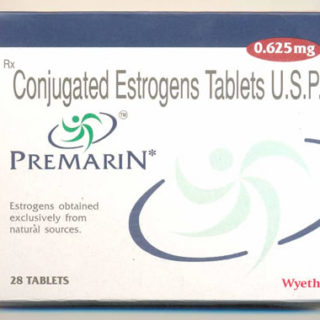Indications for use
Replacement therapy in peri- and postmenopause, ovarian hypofunction (primary and secondary amenorrhea, oligomenorrhea, dysmenorrhea), sexual infantilism, hypogonadism, secondary anabolic steroids for bodybuilding estrogen deficiency (including after ovariectomy for non-malignant diseases or after radiation castration), breast carcinoma (some inoperable forms), androgen-dependent prostate carcinoma.
Climacteric syndrome (“flushing” of blood to the skin of the upper half of the body, increased sweating, sleep disturbances, irritability, depression, atrophic urethritis and vaginitis), postmenopausal osteoporosis, prevention of atherosclerosis.
How to apply: dosage and course of treatment
Inside, the average dose for cyclic use is 0.625-1.25 mg / day for 21 days, with a break of 7 days for all indications, with the exception of isolated cases of breast carcinoma, prostate gland and prevention of lactostasis. With continuous treatment, take daily, for 1 dose.
In the presence of menstrual bleeding, treatment begins on the 5th day of the menstrual cycle, and from the 15th to the 21st day prohormone pills, any progestin preparation is additionally prescribed. With a prolonged absence of menstruation, treatment is started on any day. If necessary, on the 5-7th day of treatment, the daily dose can be increased to 3.75 mg, then it is reduced to 1.25 mg.
With intermenstrual bleeding during estrogen therapy, the dose of the latter is increased. In the next cycle, the dose that was required to stop bleeding in the previous cycle is prescribed. In subsequent cycles, the dose of estrogen is gradually reduced to maintenance.
In menopausal syndrome, cycles of 1.25 mg of the drug are prescribed daily. Doses are reduced or increased depending on the severity of the symptoms and the response of the patient. In postmenopause, as a replacement therapy for conditions caused by estrogen deficiency, 0.3-1.25 mg daily, in cycles. After oophorectomy and with primary ovarian dysfunction – 1.25 mg / day continuously or in cycles.
With dysfunctional uterine bleeding – 3.75-7.5 mg / day (in divided doses). It is believed that bleeding can be stopped in 2-5 days. If it does not stop, it is recommended to increase the dose of the supplemental testosterone drug by 50% or more. In the last 5-10 days of estrogen therapy, progestin is administered orally. Bleeding should stop 2-5 days after the end of therapy.
With hypogonadism – 2.5-7.5 mg daily for 20 days, followed by a break for 10 days. If bleeding does not occur at the end of this period, similar therapy is repeated. The number of courses of estrogen therapy depends on the sensitivity of the endometrium. If bleeding occurs at the end of the 10th day of the period, a 20-day estrogen-progestogen cycle is started according to the scheme described below (for amenorrhea).
With amenorrhea – 2.5-7.5 mg daily in divided doses for 20 days. During the last 5 days of estrogen therapy, a progestogen is prescribed orally. If bleeding occurs at the end of the treatment cycle, treatment is stopped and resumed on the 5th day of bleeding.
With breast carcinoma in postmenopausal women and inoperable breast cancer in men – 10 mg 3 times a day for 3 months. With prostate cancer – 1.25-2.5 mg 3 times a day. With postmenopausal osteoporosis – 0.625 mg / day cyclically, for a long time. For the prevention of CCC diseases – 0.625-1.25 mg / day.
Showing the single result
